Idea by
Dirk Osinga
Call for ideas 2021
The Air We All Breathe
The Air We All Breathe

- Systemic changes
In order to answer the question what sustainable architecture is, we should perhaps as architects know what it is not. The Intergovernmental Panel on Climate Change mostly relies on switching to low-carbon fuels and energy efficient technologies for its proposed mitigation strategies. Instead of relying on engineers to solve the sustainability problem of architecture, architects should focus on the indoor climate of buildings. As a proposal therefore architects can consider the following when designing new buildings:
- the orientation of a building taking into account prevailing winds, solar gain and shadow
- the planning of spaces in relation to the orientation of a building
- a high performance breathable building envelope and a minimal service installation
- efficient structures that are optimised for material use while taking into account future adaptation.
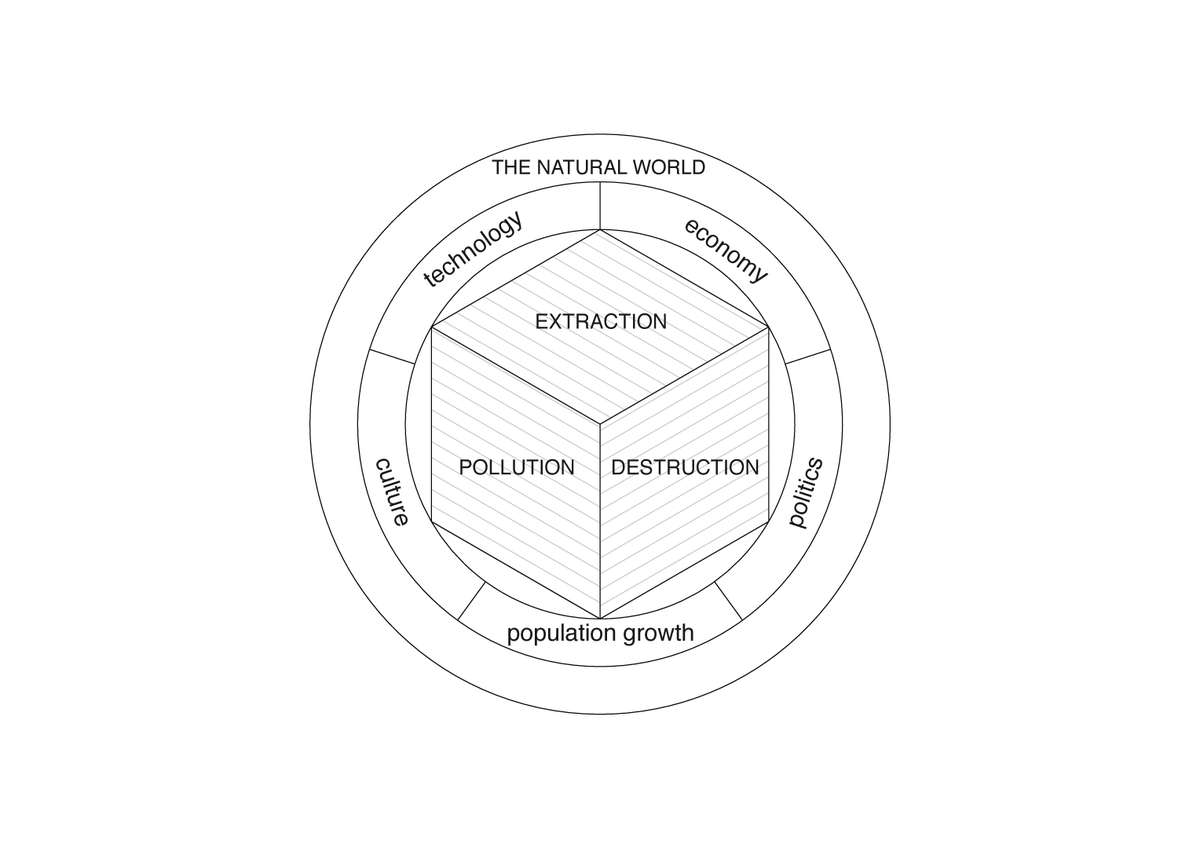
Since industrialization human activity has caused harm to the natural world while civilization depends on it. Extraction of resources has lead to resource scarcity and depletion. Pollution by greenhouse gasses (GHG) and other wastes has culminated in global warming and biodiversity loss. The destruction of habitat has compounded this loss of species. Architecture that contributes to these human activities without any form of restoration is in principle not sustainable.
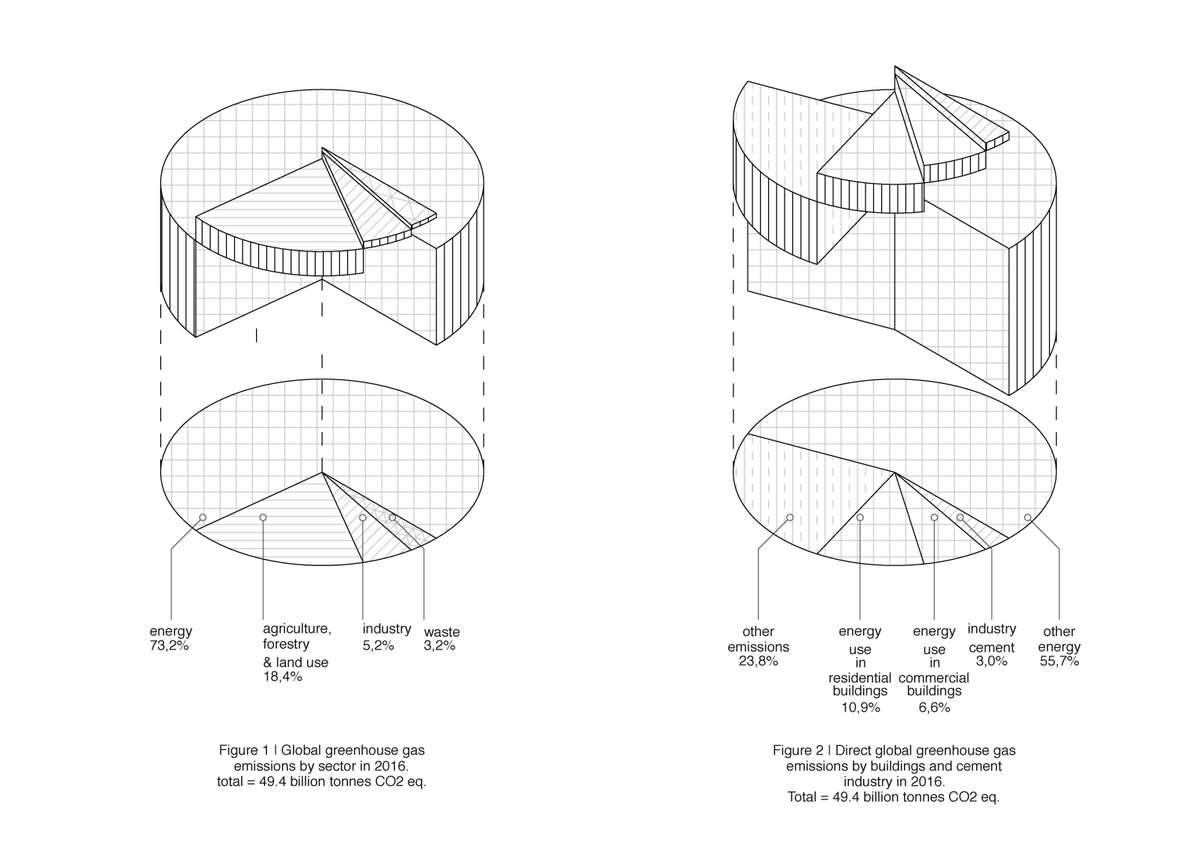
Global warming due to GHG emissions seems the worst catastrophe which is coming to us in slow motion but architects hardly seem to grasp its significance. While the biggest sector contributing to GHG emissions is the energy sector, emitting 73,2% of global GHG, buildings use about 17,5% of this percentage. In comparison the cement industry, while still significant, contributes 3% to total global GHG emissions (see figure 1 & 2).
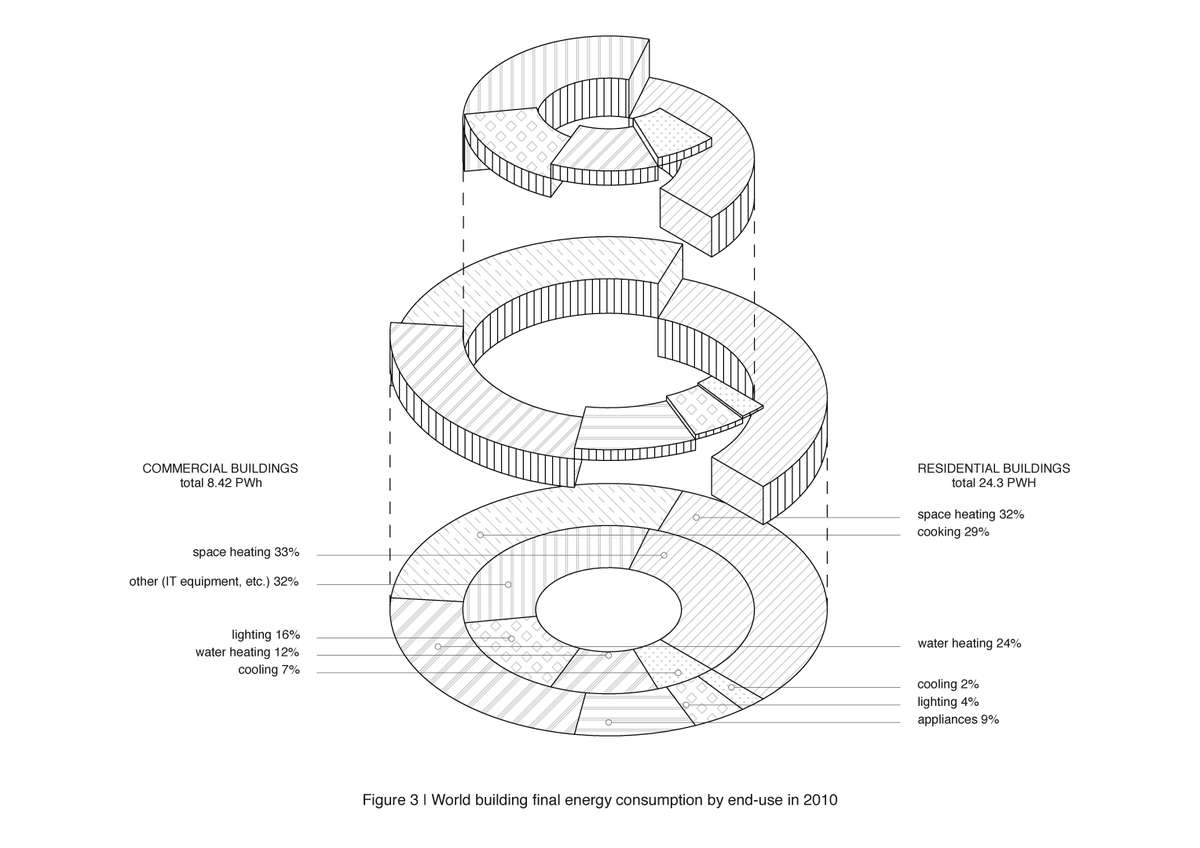
Although architects & the construction industry embrace timber as the material of the future, it is the operational energy of buildings that matters more, not the embodied energy of a structure. This is not surprising as Vitruvius emblematised strength, usage and beauty of a structure. However, he forgot to emphasise comfort. Surely climate not structure was the original reason to build architecture so it makes far more sense to concentrate on architecture’s energy consumption (see figure 3).

The goal of The Air We All Breathe is to question the hegemony of buildings services technologies & industry and explore the potential for architectural means to create comfortable interiors and design an interdisciplinary approach for creating sustainable architecture. We conducted interviews with leading experts, developed a glossary and a reference catalogue. In the next phase we would like to design and test practical scenario's and applications. We look forward to share our results.
The Air We All Breathe
The Air We All Breathe

- Systemic changes
In order to answer the question what sustainable architecture is, we should perhaps as architects know what it is not. The Intergovernmental Panel on Climate Change mostly relies on switching to low-carbon fuels and energy efficient technologies for its proposed mitigation strategies. Instead of relying on engineers to solve the sustainability problem of architecture, architects should focus on the indoor climate of buildings. As a proposal therefore architects can consider the following when designing new buildings:
- the orientation of a building taking into account prevailing winds, solar gain and shadow
- the planning of spaces in relation to the orientation of a building
- a high performance breathable building envelope and a minimal service installation
- efficient structures that are optimised for material use while taking into account future adaptation.
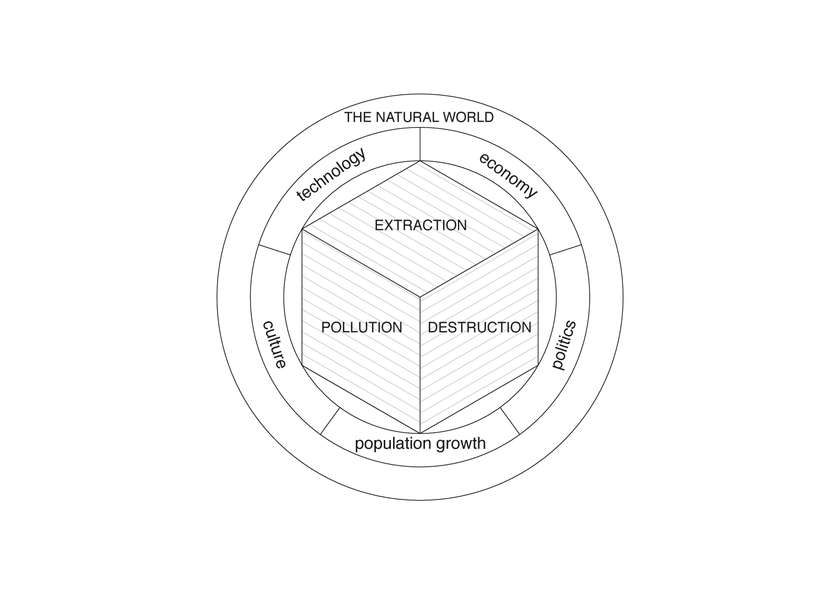
Since industrialization human activity has caused harm to the natural world while civilization depends on it. Extraction of resources has lead to resource scarcity and depletion. Pollution by greenhouse gasses (GHG) and other wastes has culminated in global warming and biodiversity loss. The destruction of habitat has compounded this loss of species. Architecture that contributes to these human activities without any form of restoration is in principle not sustainable.
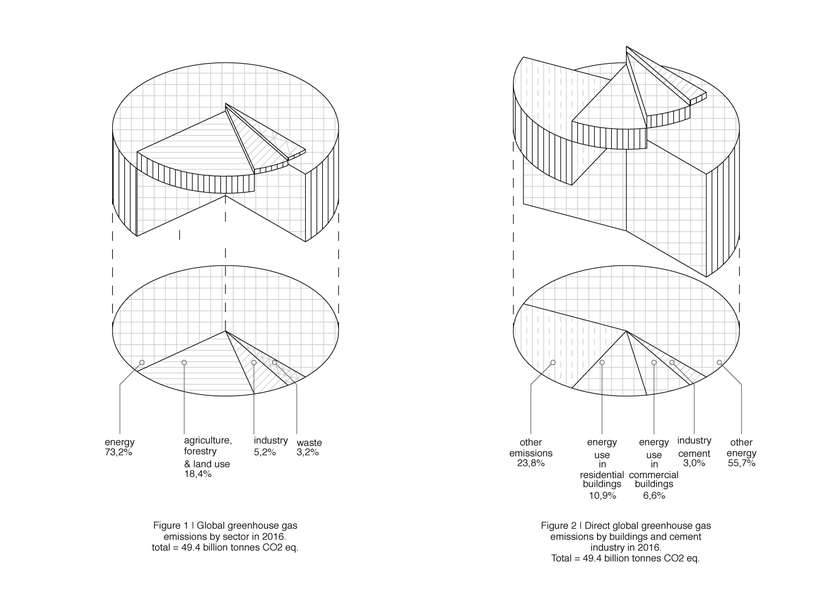
Global warming due to GHG emissions seems the worst catastrophe which is coming to us in slow motion but architects hardly seem to grasp its significance. While the biggest sector contributing to GHG emissions is the energy sector, emitting 73,2% of global GHG, buildings use about 17,5% of this percentage. In comparison the cement industry, while still significant, contributes 3% to total global GHG emissions (see figure 1 & 2).
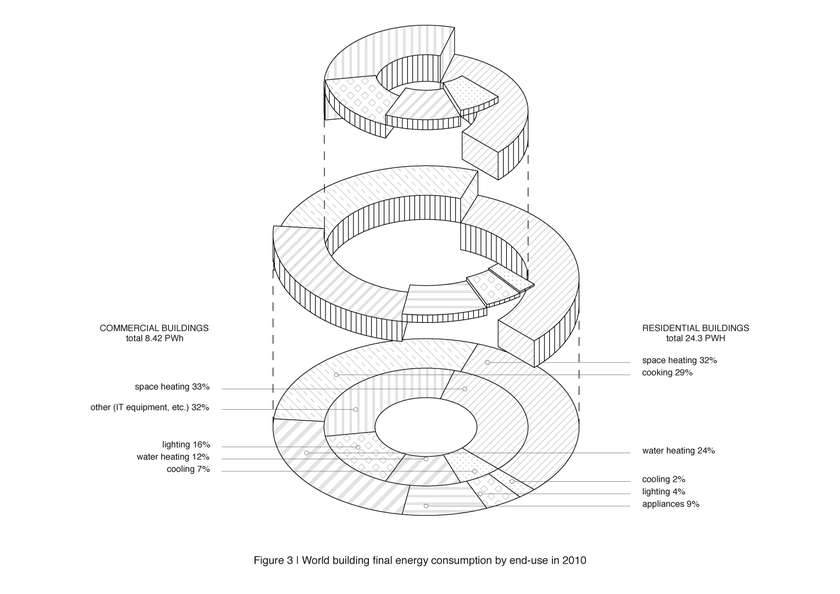
Although architects & the construction industry embrace timber as the material of the future, it is the operational energy of buildings that matters more, not the embodied energy of a structure. This is not surprising as Vitruvius emblematised strength, usage and beauty of a structure. However, he forgot to emphasise comfort. Surely climate not structure was the original reason to build architecture so it makes far more sense to concentrate on architecture’s energy consumption (see figure 3).

The goal of The Air We All Breathe is to question the hegemony of buildings services technologies & industry and explore the potential for architectural means to create comfortable interiors and design an interdisciplinary approach for creating sustainable architecture. We conducted interviews with leading experts, developed a glossary and a reference catalogue. In the next phase we would like to design and test practical scenario's and applications. We look forward to share our results.